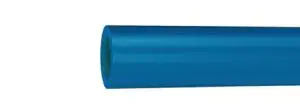INDUSTRIAL & AUTOMOTIVE TUBINGS
Industrial and automotive tubings are essential components in a vast array of systems, responsible for the safe and efficient transfer of fluids, gases, and even electrical insulation. From conveying compressed air in pneumatic systems to managing aggressive chemicals in manufacturing, the choice of tubing material is critical for performance, durability, and safety. Our comprehensive range of industrial and automotive tubings, including Polyamide, Polyurethane, Spatter, PTFE, and FEP, are engineered to meet the stringent demands of various industries, ensuring reliable operation and longevity.
More Info
Our diverse range of industrial and automotive tubings offers tailored solutions for various applications:
Specialized Tubing Solutions for Industrial & Automotive Applications
Polyamide Tubing (Nylon Tubing)
Polyamide tubing, commonly known as Nylon tubing, is a versatile and widely used material due to its excellent balance of properties. It offers high resistance to abrasion, chemicals (including many solvents, oils, and fuels), and impact. Polyamide tubing maintains good flexibility and dimensional stability over a wide temperature range, making it ideal for compressed air lines, fuel lines, lubrication systems, and vacuum lines in automotive and industrial settings. It is available in various grades, such as Nylon 6, Nylon 11, and Nylon 12, each offering slightly different characteristics in terms of flexibility and chemical resistance.
Polyurethane Tubing (PU Tubing)
Polyurethane (PU) tubing is highly regarded for its exceptional flexibility and kink resistance, even at low temperatures. It also boasts excellent abrasion resistance, good chemical resistance, and a high burst pressure, making it suitable for demanding pneumatic applications, robotics, and fluid transfer systems where flexibility is paramount. PU tubing is often transparent or translucent, allowing for visual flow inspection. Its elastic properties make it ideal for use with push-to-connect fittings.
Spatter Tubes
Spatter tubes are specifically designed for applications in welding environments where exposure to hot metal spatter is a concern. These tubes are typically made from materials that offer superior resistance to heat, abrasion, and molten metal adherence, such as specially formulated polyurethane or hybrid materials. Their robust construction protects vital pneumatic or hydraulic lines, ensuring uninterrupted operation and reducing maintenance in harsh conditions like robotic welding cells or manufacturing lines.
PTFE Tube (Polytetrafluoroethylene Tube)
PTFE (Polytetrafluoroethylene) tubing is a high-performance material renowned for its outstanding chemical inertness, high-temperature resistance, and non-stick properties. It can withstand exposure to virtually all chemicals, acids, and bases, making it indispensable for transferring aggressive fluids, chemicals, and corrosive gases. PTFE tubing also has a very low coefficient of friction, excellent electrical insulation properties, and a wide operating temperature range. It is commonly used in chemical processing, laboratory applications, automotive fuel systems, and high-temperature environments.
FEP (Fluorinated Ethylene Propylene) Tubing
FEP (Fluorinated Ethylene Propylene) tubing is another fluoropolymer that shares many of the excellent properties of PTFE, including chemical inertness and high-temperature resistance. However, FEP offers superior clarity and is melt-processable, allowing for longer continuous lengths and more complex shapes. It also has a slightly lower operating temperature range than PTFE but provides better flexibility. FEP tubing is often chosen for applications requiring chemical resistance, clarity for fluid monitoring, and high-temperature performance, such as in laboratories, semiconductor manufacturing, and environmental sampling.
These tubings are critical for optimizing system performance, reducing downtime, and ensuring the safety of operations across various sectors.
Applications:
Industrial and automotive tubings are commonly used for:
- Pneumatic Systems: Air lines for tools, machinery, and automation.
- Fluid Transfer: Fuel lines, lubrication systems, hydraulic lines (low pressure), coolant lines.
- Chemical Processing: Conveying acids, solvents, and corrosive liquids.
- Robotics: Flexible lines for robotic arms and automated machinery.
- Welding Environments: Protection of lines from hot metal spatter.
- Automotive: Brake lines, emission control, vacuum systems, fuel injection.
- Laboratory: Fluid handling, sampling, and analytical equipment.
- Electrical Insulation: Sleeving for wires and cables.
- Medical Devices: Various fluid and gas transfer applications (specific grades).
FAQ
Q. What is the primary advantage of Polyamide (Nylon) tubing over other types?
A. Polyamide tubing’s main advantage is its excellent balance of properties, including good abrasion and chemical resistance, high impact strength, and dimensional stability, making it a versatile choice for many general industrial and automotive fluid and air transfer applications.






